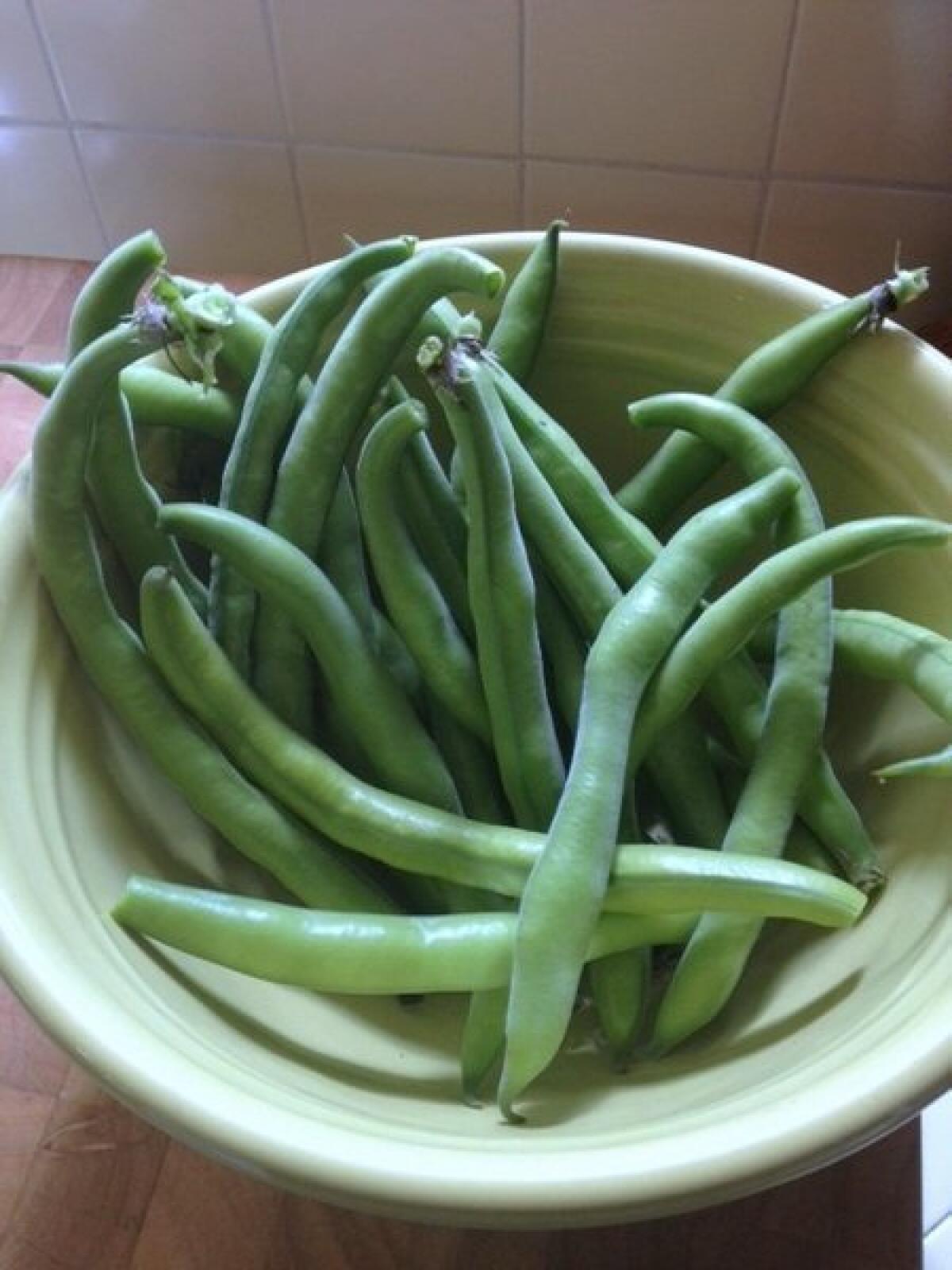Fishing for fava recipes -- the hive mind comes through

Sunday morning I went out to my garden and picked some fava beans. Then, because I’m a modern kind of guy, I did what everybody does and posted a picture of them on Facebook and tweeted a link. That’s just how I roll these days (@russ_parsons1 ... come join the party).
I’ve been a big fan of favas for years, mostly because they fit so well with my cooking aesthetic -- they take a lot of work to prepare, are only available for a short window of time, and then usually only at farmers markets. If there is a less user-friendly crop, I don’t know what it is. (There’s also that whole weird Mediterranean medical mystery angle.)
Still, they are amazing -- a flash of green, almost buttery in texture with a vivid flavor. Favas are the essence of spring. At least until the fat asparagus starts to arrive -- maybe next weekend.
My plan was to husk them, peel the skins and use the little beans to make risotto. But I thought as long as I was making every moment of my life public, I’d throw open dinner too, and I asked for suggestions.
Within minutes they came flooding in -- from great cooks all over the world.
- On Facebook, cookbook author Nancy Harmon Jenkins wrote: “Raw, fresh, young green fava with pecorino cheese -- it too can be young and fresh (but not green!), or a little more aged. A classic Tuscan combination. In the Middle East, they often cook the pods right along with the beans, breaking them up like green beans. Extremely delicious with olive oil, garlic, lemon.”
- Lebanese cookbook author Anissa Helou contributed: “Coriander is a v good companion to the fava beans stewed in their young pods with lemon and olive oil.” But I neglected to ask whether she meant the seed or the leaf (cilantro).
- Food blogger Zerrin Gunaydin said: “I made a typical Turkish olive oil dish with fresh favas today! Squeeze half lemon in a cup of water. Add 1 tsp flour in it. Chop fava beans in it. This protects the color of favas. Saute finely chopped onion and 1 tomato in olive oil. Add fava beans and mix. Cook for a few minutes and then add the water with lemon and flour in the pan. Cook until tender. Add finely chopped fresh dill after it is cooked. Serve it on a plate with some yogurt on the top!”
- Diane Morgan, author of the terrific new cookbook “Roots,” wrote: “A chef friend taught me to grill them. String them, if needed. Toss with olive oil and grill them pod and all -- then sprinkle with salt and eat them pod and all.”
- Italian cookbook author Michelle Scicolone agreed with Jenkins: “As they do in Rome, pop them out of the shells and eat them raw with bread, pecorino and red wine.” (If I could get really fresh milky pecorino, I might have done this…. It also works with feta, by the way.)
- Jean Louis de Mori, co-owner of the wonderful Maccheroni Republic downtown wrote: “Clean them, look at them, touch them, smell them, e.v.o.o., Maldon salt, eat them....”
- Cookbook author Julia della Croce wrote: “My favorite way is to braise them with garlic and parsley, the way my Sardinian mother always did.”
- Margie Gibson had a great idea: “Cook and puree the favas -- some fried onions and garlic wouldn’t hurt. Cook greens (rapini, turnip, dandelion, kale) in browned onions, garlic, bacon and hot peppers and put over the mashed favas. Top with Parmesan, pecorino or feta. Pour your favorite Puglian or Sicilian wine to enjoy with the fava and greens.”
- My old friend cookbook writer Clifford Wright (latest: “One Pot Meals”) suggested pureeing them with olive oil and a touch of cinnamon.
- Greek cookbook writer Aglaia Kremezi wrote: “Choose the small and tender pods, dip them in batter and fry the whole pod. Wonderful enjoyed with thick yogurt, tzatziki or garlic sauce!”
Meanwhile, over on Twitter, Sarene Wallace suggested adapting a recipe from Yotam Ottolenghi’s cookbook “Plenty.” And that got the attention of Ottolenghi’s business partner Sami Tamimi, co-author of their new cookbook “Jerusalem.”
He chipped in with a quick list of his own: “Make a basic tomato sauce, with onion & without garlic, add the chopped beans and cook 4 few minutes. add basil, mint and lots of good olive oil, you can add chili to spice it; add cooked pasta; add large chunks of feta and enjoy! one of my favourites!”
Of course, I took none of that advice -- or more accurately, I took a little from several of them, using what I had on hand. Hey, it was Sunday, OK?
I made a tomato sauce with sliced onions and fennel and braised the cut-up favas, in the pod, in that. When they were tender, I folded in chopped fennel fronds and served that with yogurt.
Honestly, it was a good Sunday night dinner while watching the Laker game, but it isn’t yet a recipe worth printing. It was close, but lacked a certain pop I’d hoped for. Maybe chopped black olives? Maybe it was just as Tamimi suggested and I needed some fresh basil and mint.
But I will be tweaking it and trying to find the right combination. And now I certainly know where I can go for help.
ALSO:
More to Read
Eat your way across L.A.
Get our weekly Tasting Notes newsletter for reviews, news and more.
You may occasionally receive promotional content from the Los Angeles Times.







